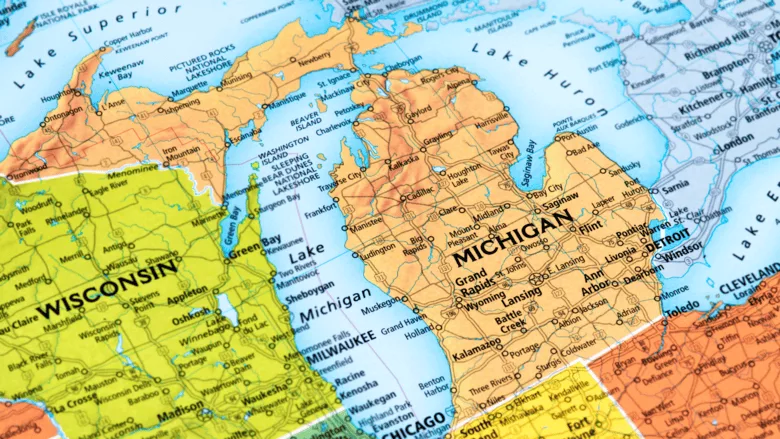EPA Approves Deep-Well Injection Permits in Central Michigan
In the U.S., about 800 Class I wells are currently in operation, with approximately 53% used for non-hazardous industrial waste.

Image via Omer Sukrugoksu from Getty Images Signature
Amid plenty of debate over industrial resource extraction and water safety, the U.S. Environmental Protection Agency (EPA) approved six permits for deep underground injection of non-hazardous salt water in Michigan’s Osceola and Mecosta counties.
The decision allows Michigan Potash Operating LLC to move forward with plans to dispose of mining-related fluids via Class I non-hazardous injection wells, a highly regulated method of industrial waste management.
The permits—three new and three modified—will enable the company to inject brine generated by a proposed potash mining and processing facility deep into the Earth, far below drinking water sources. This disposal method is standard for industries including chemical production, petroleum refining, and food processing, particularly in regions like the Great Lakes and Gulf Coast, where the geology is ideal for such activity.
“These permits will allow the company to inject non-hazardous salt water from a proposed potash mining and processing facility for disposal into Class I wells,” the EPA stated in a press release.
The EPA’s Underground Injection Control (UIC) program, developed under the Safe Drinking Water Act, governs the permitting and operation of Class I wells. These wells must be cased and cemented to prevent contamination and are continuously monitored to ensure that injected fluids remain confined to designated deep rock formations.
“Federal regulations require operators of Class I wells to inject waste into deep, confined rock formations below the deepest underground source of drinking water,” the EPA said. “Permits require active monitoring to confirm safe operation of the wells.”
Class I wells are drilled thousands of feet beneath the surface, typically between 1,700 and 10,000 feet deep, depending on local geology. They are specifically designed to avoid contamination of underground sources of drinking water (USDWs).
In the U.S., about 800 Class I wells are currently in operation, with approximately 53% used for non-hazardous industrial waste.
The permitting process for Michigan Potash was expedited under a directive from former President Trump’s Executive Order, “Immediate Measures To Increase American Mineral Production,” a policy aimed at reducing reliance on foreign mineral imports. Potash, a key agricultural fertilizer, is critical to U.S. food supply chains.
While EPA officials emphasized that public input was considered—responding in writing to all significant comments—critics of fast-tracked permitting argue it often sidelines more robust environmental review.
The use of underground injection for waste disposal is not new, but it is often controversial. A 2001 EPA study on Class I wells concluded that when properly sited and maintained, the risk to human health and the environment is low. However, the study also acknowledged the need for vigilant monitoring, especially in areas reliant on groundwater for drinking and agriculture.
Despite such findings, concern persists among environmental groups and local residents about long-term impacts, especially given Michigan’s complex hydrology and dependence on aquifers.
EPA officials maintain the wells are located deep below USDWs and that multiple geological layers act as barriers between waste and drinking water. Still, environmental advocates stress the importance of transparent, long-term oversight—especially as climate change increases stress on freshwater resources.
The permits granted to Michigan Potash Operating LLC are valid for up to ten years. During that time, the company must comply with stringent construction, monitoring, and record-keeping requirements. Any changes to operations or violations of permit conditions could result in enforcement actions or permit revocation.
With growing national emphasis on domestic mineral production and industrial self-sufficiency, projects like this are likely to become more common. Whether this trend can coexist with robust water protection remains an open question.
Looking for a reprint of this article?
From high-res PDFs to custom plaques, order your copy today!









